Latest stories

A US strategy to trump China in SE Asia

Singapore's new 'Invincible' sub points to US-China war worries
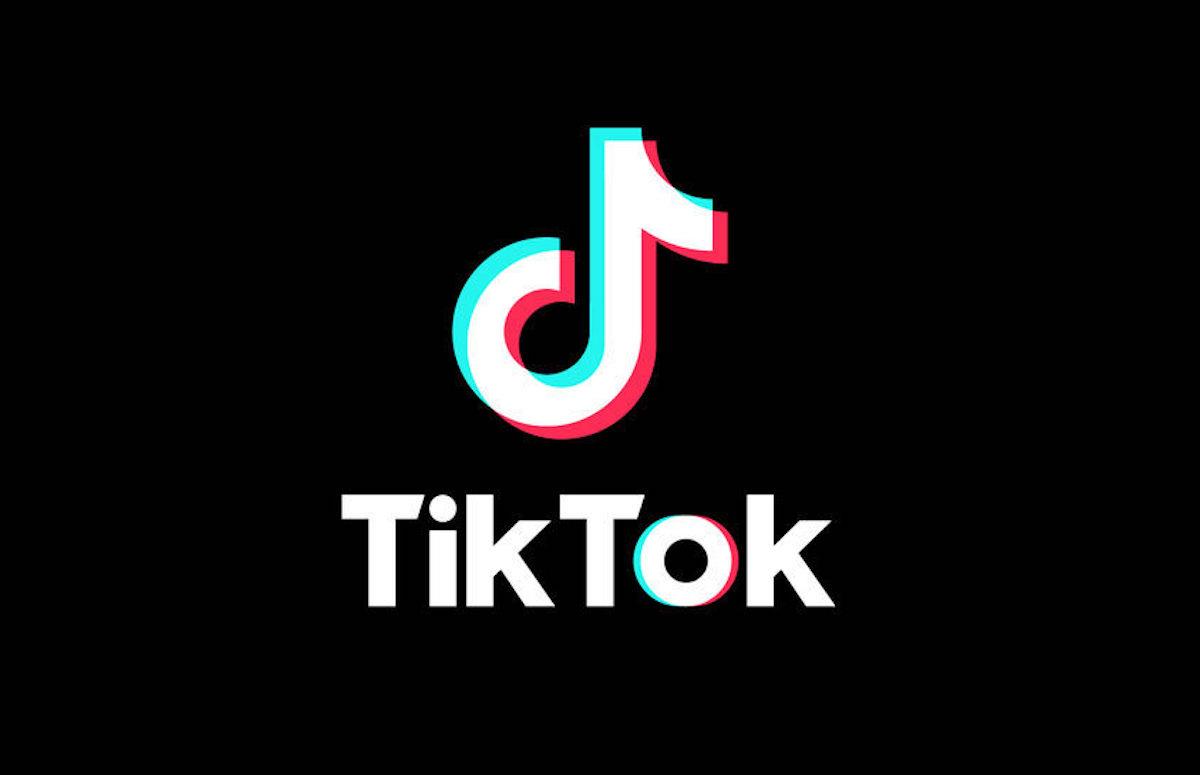
Add poor media literacy to TikTok fears Progress against climate change One thing that gets many Americans depressed - especially many young progressive Americans - is climate change. And that's understandable! Climate change is a huge threat to our way of life, not to mention the natural world. The last year was
especially brutal .
There's an inherent difficulty in solving climate change, since it's an
externality
- climate policy is made at the level of individual countries, so each country has an incentive to sit back and do nothing and insist that the other countries handle the global problem.
But there's another powerful force working against climate change:
technology. Solar power, batteries, and other green technologies have gotten cheaper at astounding rates, to the point where decarbonization is the smart
economic
option as well as the good environmental choice.
At the same time, economic growth is generally shifting from manufacturing to services, especially online services, which are less carbon-intensive. As a result, emissions have been falling in the developed world, and decelerating across much of the developing world:
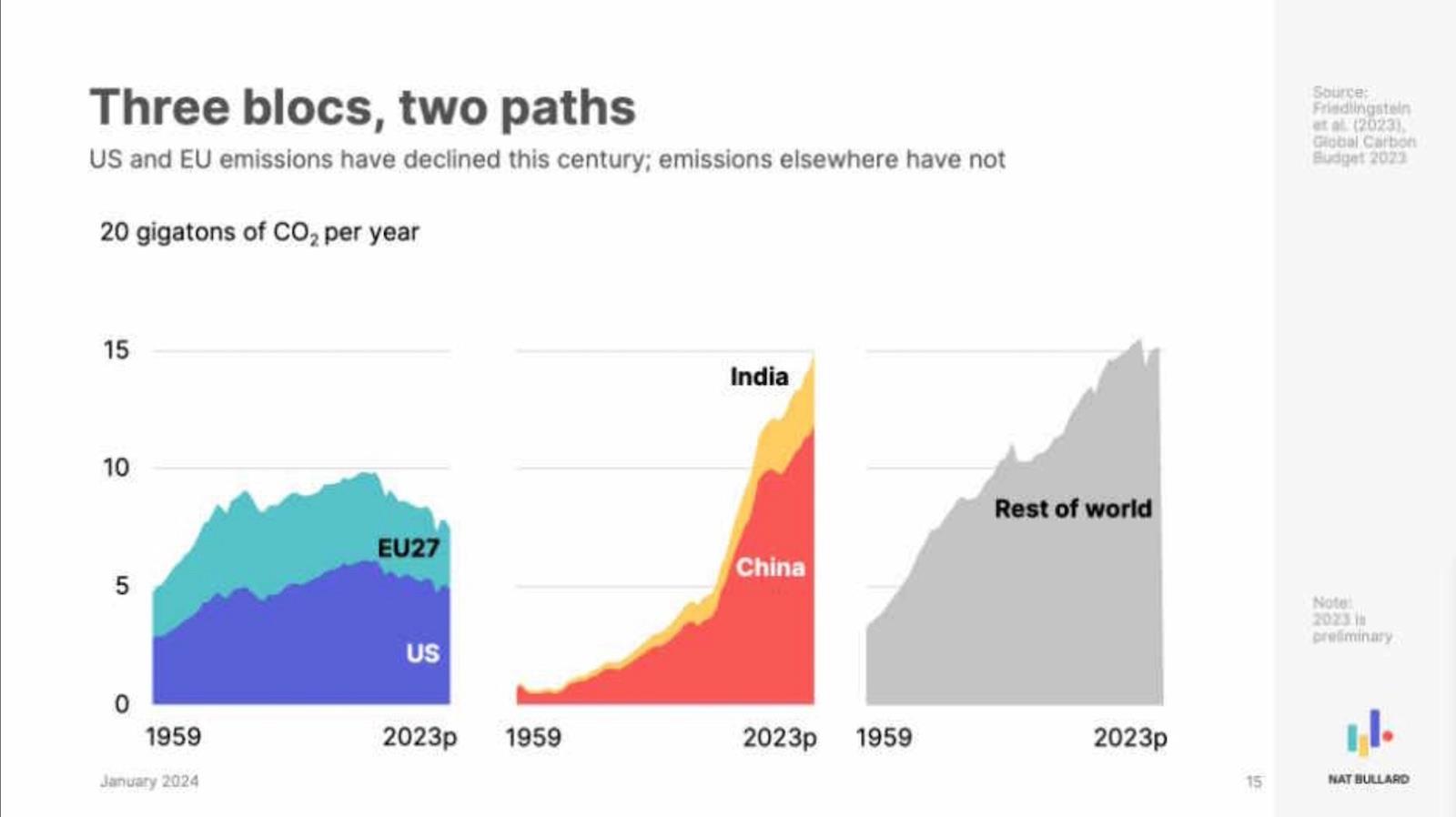
Source:
Nat Bullard And as a result, projections for how bad climate change will get have been falling for the last six or seven years:
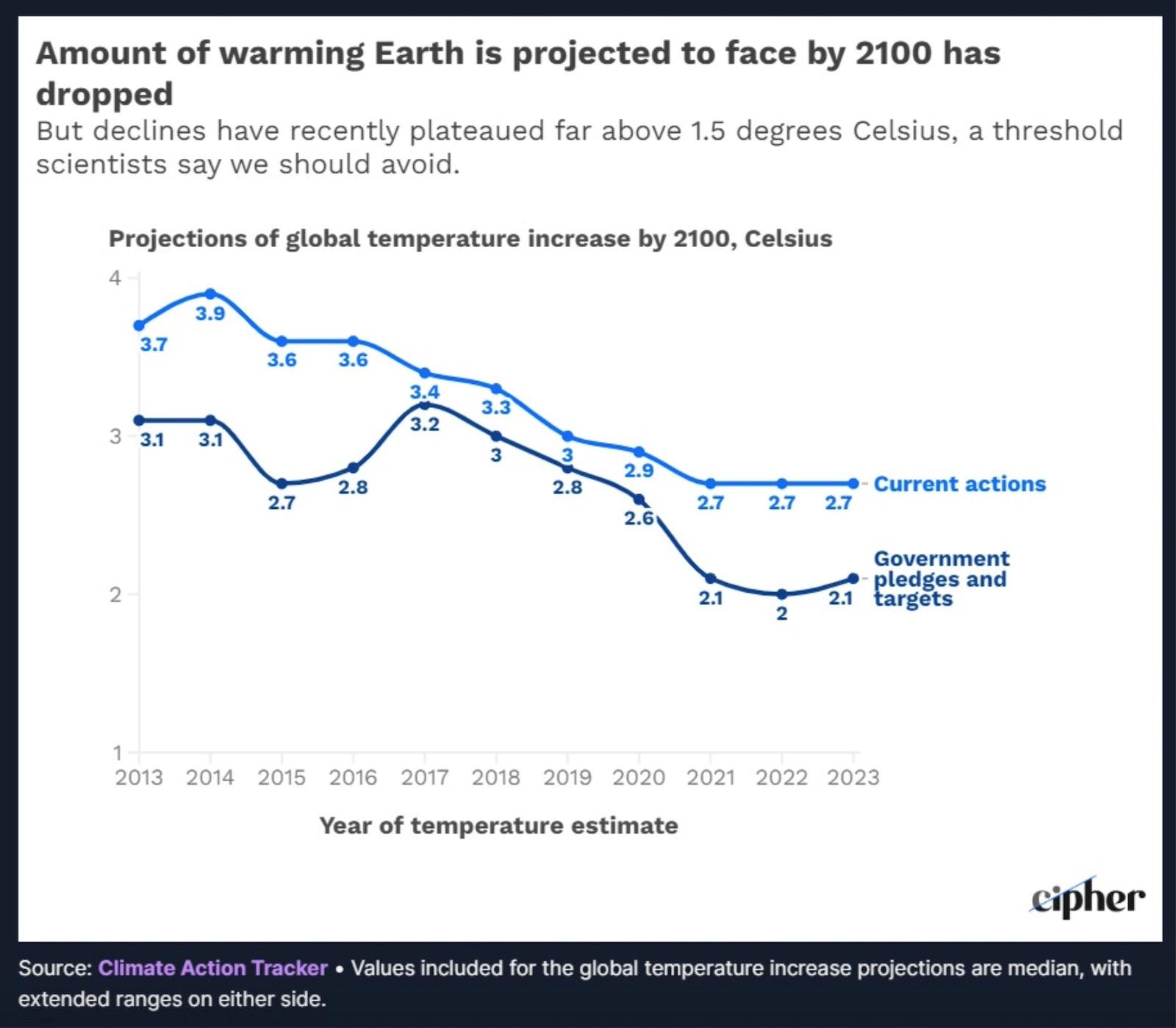
Source:
Cipher Obviously much more needs to be done. 2.7 degrees of warming will be pretty catastrophic for a lot of people and places, and even 2.1 degrees will be difficult to live with. Electrification and decarbonization need to accelerate.
But still, this is big progress, on a huge, important, and potentially even existential issue.
US economy is growing pretty fastA lot of people these days like to downplay the importance of GDP, but actually it's a very important economic number. GDP is a measure of national
income
- the amount that people
spend
on goods and services is, theoretically speaking, the same as the amount that people
earn
(even if in practice there are small differences between these numbers when we measure them).
We want people's incomes to go up! That means GDP growth. Also, faster GDP growth means
more people have jobs . US growth has actually been pretty average since the pandemic; it's basically staying on the trend line of previous decades.
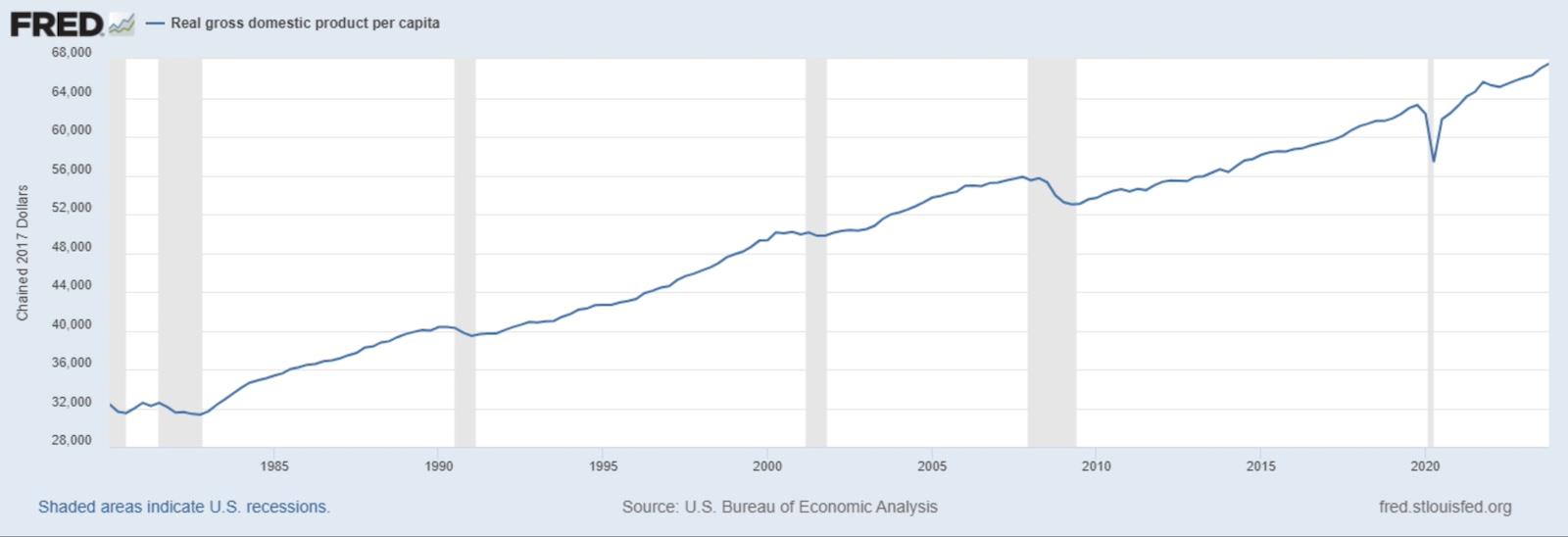
But when you look at international comparisons, America is actually doing really well. Most countries have struggled to grow at pre-pandemic rates in the post-pandemic era - this is especially true of European countries that suffered from the Russian gas cutoff, but it's also true of places like Japan and Canada (and even China).
The US has
powered ahead , even when you take higher immigration rates into account:

Screenshot(Note: This is not a per capita measure, but since most population growth in rich countries is now due to immigration, it's basically the same.)
And forecasters expect the US to
continue to outpace other rich countries this year
as well.
Why is the US growing so quickly? Two commonly cited reasons are 1) the US' expansionary fiscal policy, including more generous Covid relief payments, and 2) Biden's industrial policy, which is
causing a boom
in factory construction.
But I would also like to point out
allocative efficiency. The US economy got very shaken up by Covid; a lot of businesses were destroyed, and there was
a huge boom in new businesses . Americans also
moved around the country
a lot more than they had been doing in previous years.
That churn results in a better allocation of productive resources - crappy old businesses die and better ones replace them, while workers move to jobs and places where their talents are put to better use.
In any case, American income is growing strongly. And there's even better news: The higher income is flowing into the pockets of young Americans and the working class.
Younger generations are doing better than their parents I've
written
several
posts
about this over the past year, but the positive data keeps coming in, and it's good to go over it again.
In the 2010s, there was a big worry that the Millennial generation, and perhaps also Generation Z, would be uniquely hurt by the financial crisis and by other negative economic trends.
But in the years since the pandemic, it's become apparent that younger generations are - on average - doing very well economically. The Economist has
a good story
showing generational income gains by age:
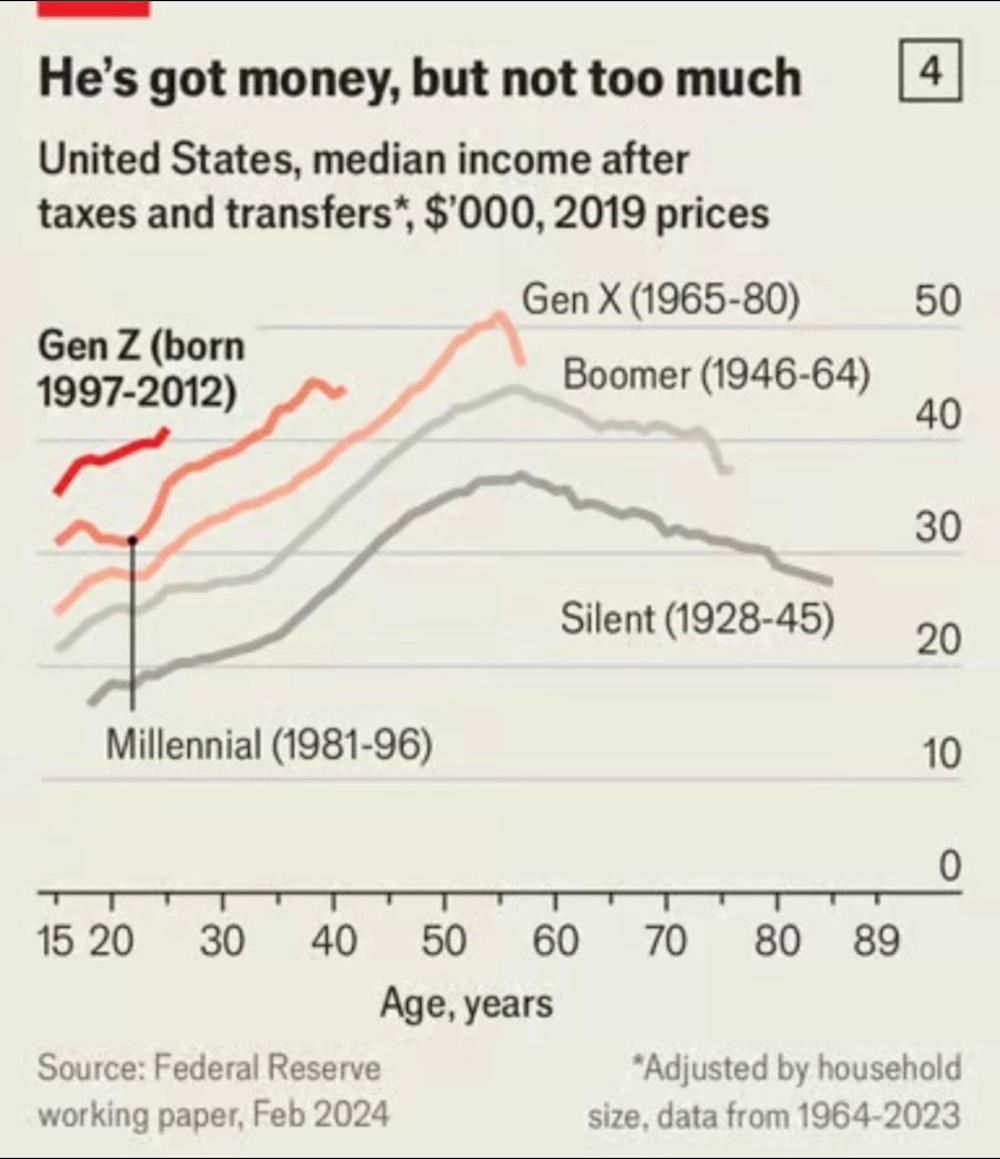
Source:
The Economist Note that this chart is adjusted for changes in the cost of living over time.
And Jeremy Horpedahl has been
tracking younger generations' wealth gains
over at his blog:
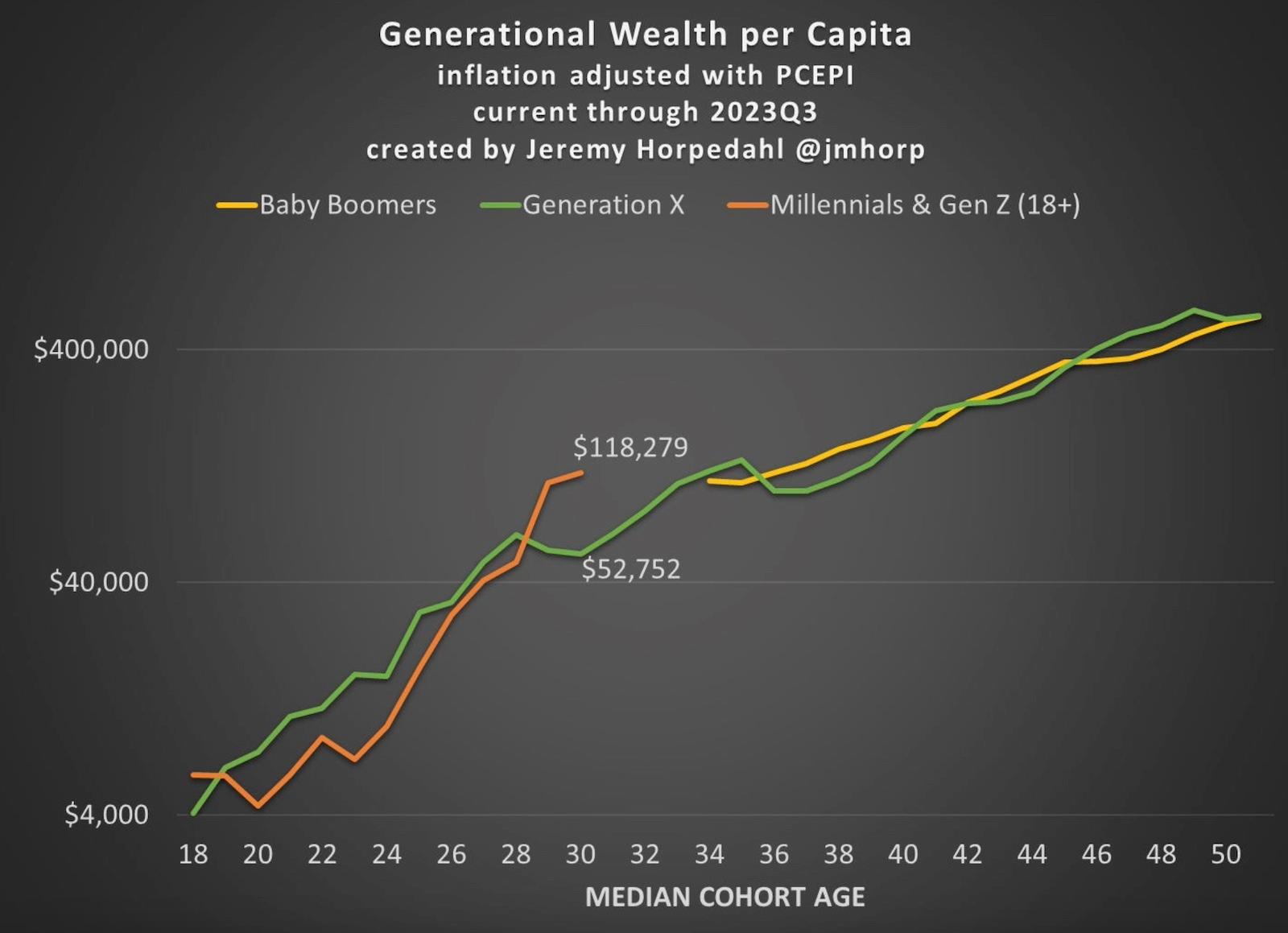
Source:
Jeremy Horpedah lThere are two basic reasons for the jump in the wealth of younger generations: 1) rising house prices, and 2) falling debt levels.
Now, these are averages, not medians. It's reasonable to worry about inequality within the younger generation, especially regarding who gets to inherit an expensive house from their parents. But from 2019 to 2022, there were big increases in Millennials'
median
wealth, not just average:
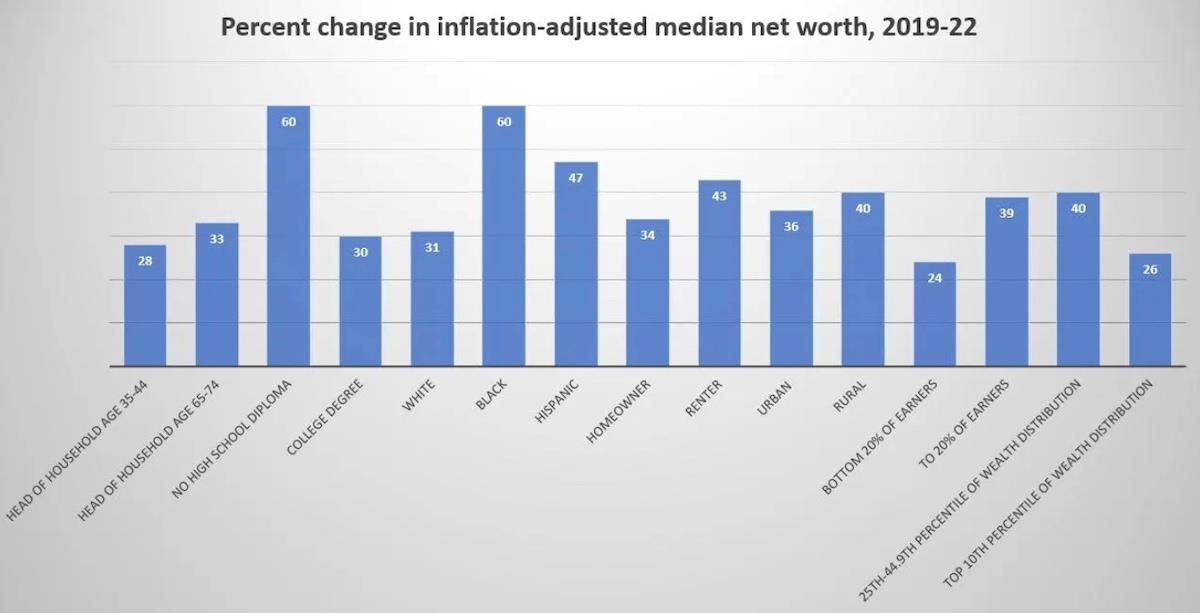
Source:
FR B

Sign up for one of our free newsletters The Daily ReportStart your day right with Asia Times' top stories AT Weekly ReportA weekly roundup of Asia Times' most-read stories
The changes were especially good for traditionally disadvantaged groups - Black and Hispanic Americans, Americans without a college degree, rural Americans, renters, etc. So that suggests that the surge in the wealth of the younger generation isn't flowing disproportionately to richer young people (as it
might be in the UK ).
So young Americans are doing well - they're making more than their parents did at similar ages, and their wealth is higher too, despite spending more years in school and getting a later start on their careers.
Wage Inequality is fallingInequality in America increased a lot in the 1980s, then again in the 2000s and early 2010s. By far the biggest piece of this was increased wage inequality - some people earned a lot more, others saw their wages fall. There were huge debates over what caused this - the decline of unions, competition with China, automation, changes in the tax code, or the rise of new technologies that benefitted educated workers more than others.
But in the mid 2010s, wage inequality plateaued:
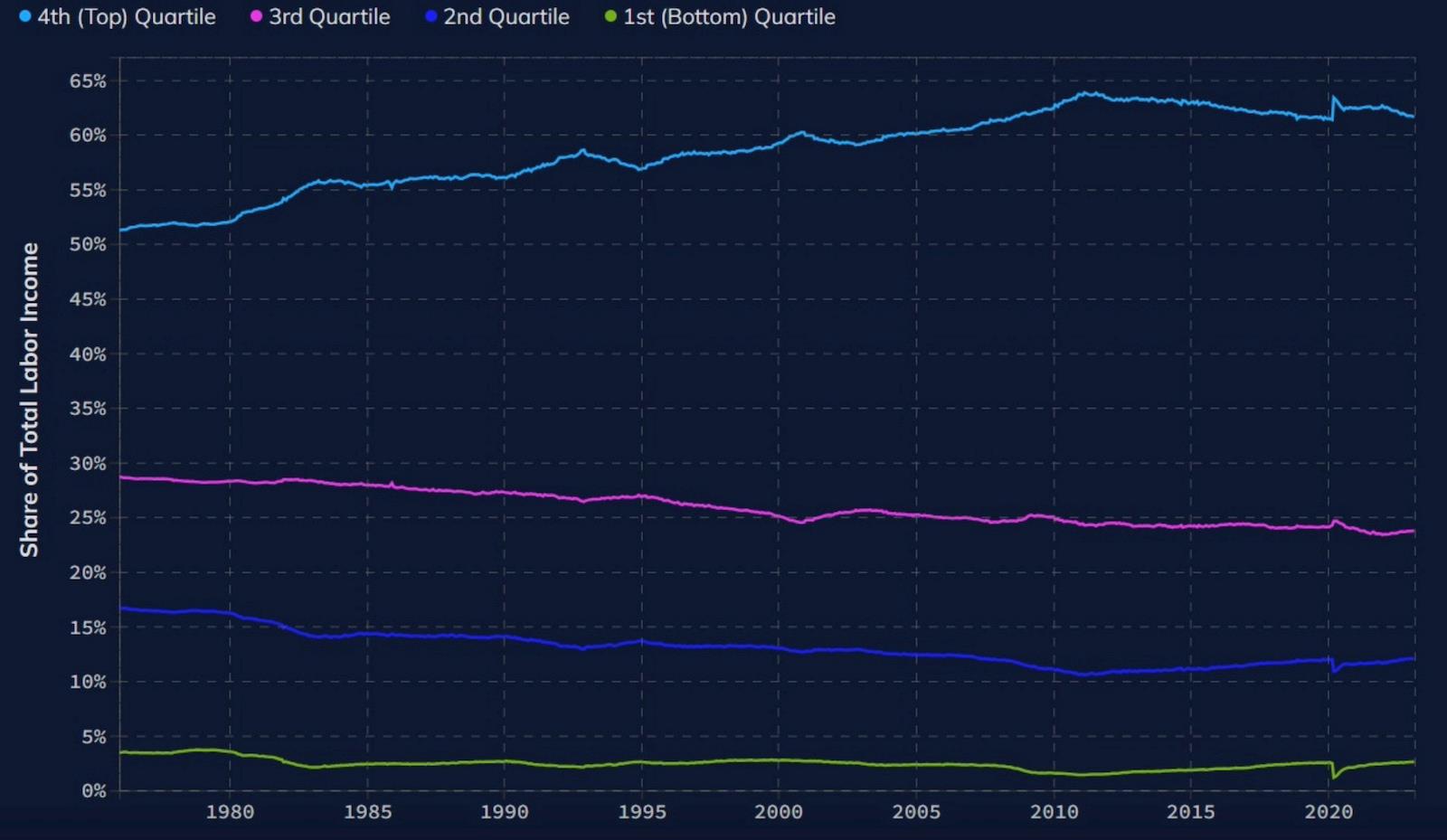
Source:
realtimeinequality And since the pandemic, this trend has accelerated. Autor, Dube, and McGrew have
a recent paper
titled“The Unexpected Compression: Competition at Work in the Low Wage Labor Market”, in which they document how low-wage and medium-wage workers have seen big gains since 2019, while high-wage workers have lost a bit of ground.
They cite the reallocation of labor as the biggest factor - now that Americans are switching jobs a lot more, low-wage workers are able to drive a harder bargain against their employers.
In fact, Jeremy Horpedahl has my favorite chart showing the real wage gains (i.e., adjusted for the cost of living) across the distribution:
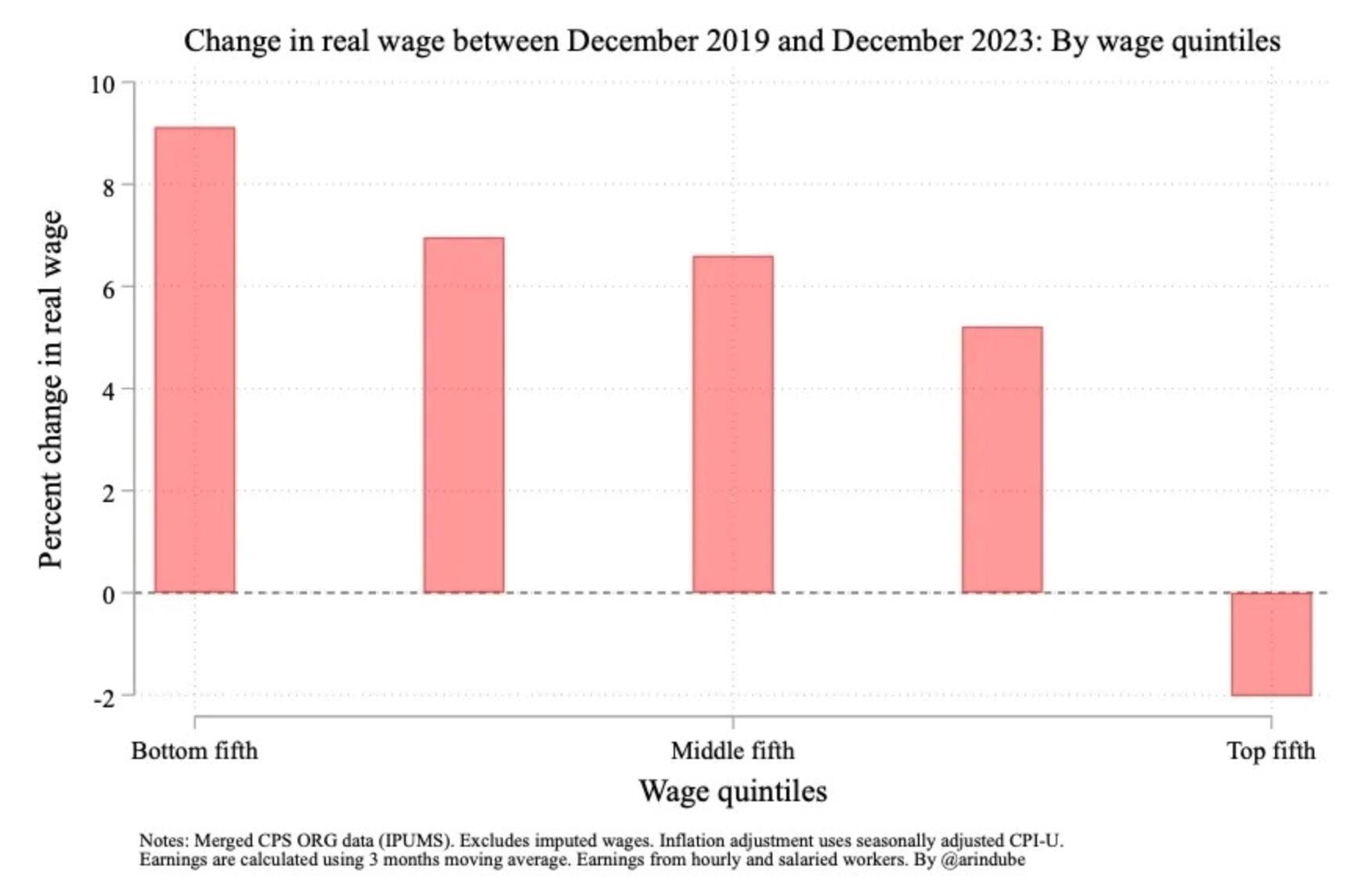
Source:
Jeremy Horpedahl It would be nice if the top fifth had gained as well, but the strong gains for the people at the bottom are something to celebrate. So those are five recent trends to be optimistic about in America today.
We have a healthy economy, which is finally delivering on its promise to low-wage workers and young people, both in terms of greater income and greater wealth. Crime is falling, and the threat of global warming is a little less dire.
This
article
was first published on Noah Smith's Noahpinion
Substack and is republished with kind permission. Read the
original
and become a Noahopinion
subscriber
here.
Already have an account?Sign in Sign up here to comment on Asia Times stories OR Thank you for registering!
An account was already registered with this email. Please check your inbox for an authentication link.